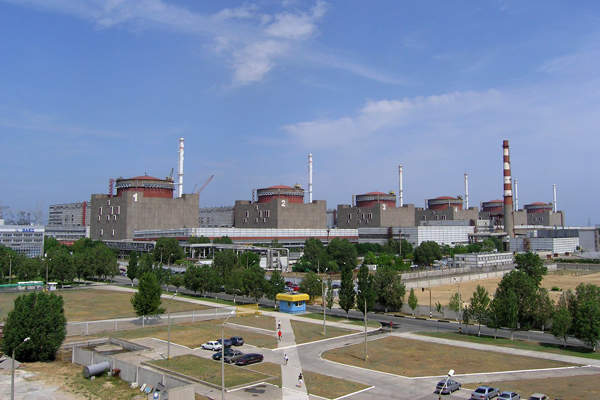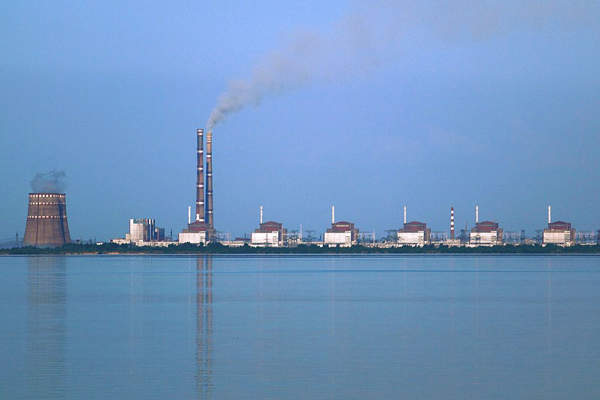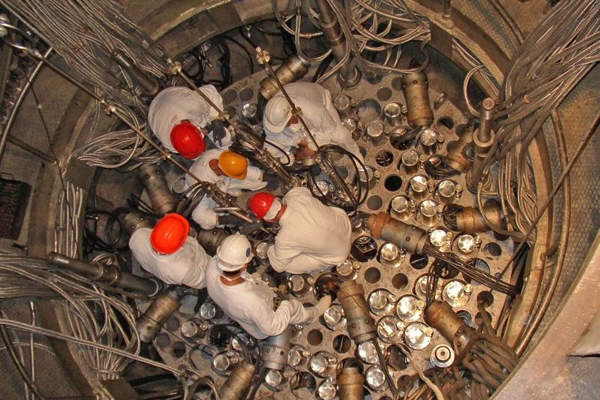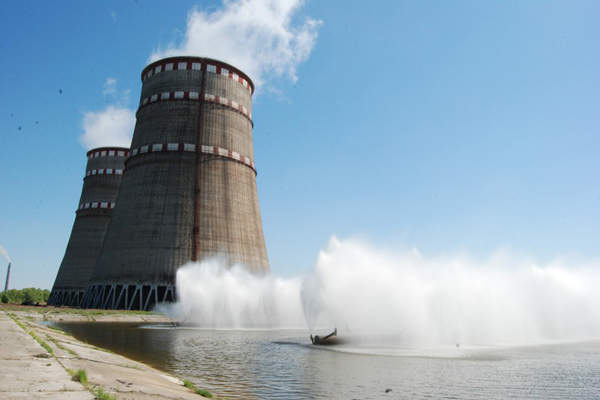Understand the impact of the Ukraine conflict from a cross-sector perspective with the Global Data Executive Briefing: Ukraine Conflict
The 6GW Zaporizhzhya Nuclear Power Plant (NPP), located in Energodar, Ukraine, is owned and operated by Ukraine’s national nuclear energy generating company NNEGC Energoatom.
Zaporizhzhya is one of the four operating NPPs in the country and generates up to 42 billion kWh of electricity, accounting for about 40% of the total electricity generated by all the Ukrainian NPPs and one-fifth of Ukraine’s annual electricity production.
Operational since 1984, the plant had generated more than 1.23 trillion kilowatt-hours (kWh) of electricity as of December 2021.
The Zaporizhzhya NPP consists of six pressurised water reactor (PWR) units commissioned between 1984 and 1995, with a gross electrical capacity of 1,000MW each.
Unit 5 of the NPP was reconnected to the United Power System of Ukraine following a scheduled outage in 2019. Similarly, Units 1, 3 and 4 were reconnected to the grid following scheduled outages in 2021. The scheduled outages facilitated the transition of the four units to switch to the nuclear fuel from an alternative supplier Westinghouse.
Zaporizhzhya NPP details and reactors
The Zaporizhzhya nuclear power facility is situated on a 104.7ha site on the banks of the Kakhovka reservoir. The Steppe zone of Ukraine was selected because of available infrastructure at the nearby Zaporozhe Thermal Power Plant, land unsuitable for agriculture and its distance from foreign territories.
Each generating block of the plant consists of a VVER-1000/V-320 reactor, K-1000-60/1500-2 steam turbine and TWW-1000-4 generator. The Soviet-designed VVER-1000s are PWRs designed to operate for 30 years.
In 2021, the fourth 750kV overhead line from the NPP to the Kakhovska substation was commissioned and the plant outdoor switchyard was expanded, which reduced transmission constraints and enabled 17 million kWh a day of additional electricity production by the plant.
Units 1 and 2 underwent a lifetime extension, which involved the modernisation of equipment as well as installation of tension sensors and other advanced safety systems, following the March 2011 Fukushima-Daiichi nuclear disaster.
The central radiation monitoring panel of the NPP was renovated in February 2021. The panel features an automatic system to monitor all radiation and technological parameters pertaining to the condition of the power units, the spent nuclear fuel drying storage facility site and radioactive waste treatment complex, as well as the area surrounding the plant.
Zaporizhzhya spent-fuel dry storage facility
Following the breakup of the USSR, spent-fuel could no longer be transported to Russia, and the shortage of free space in the cooling pools demanded a spent-fuel dry storage facility (SFDSF) at the site. The State Nuclear Regulatory Inspectorate of Ukraine issued a license for the development of the first SFDSF at Zaporizhzhya NPP in July 2001. Zaporizhzhya is the first Ukrainian NPP with VVER type reactors to include an SFDSF with a 50-year service life.
The spent nuclear fuel from the reactors is stored in cooling pools for four to five years until the residual energy and radioactivity decrease. It is then transferred to the SFDSF.
The storage system can accommodate more than 9,000 spent-fuel assemblies in 380 ventilated storage casks of 144t each. The facility began operations in August 2004 and 167 casks have already been installed on the site.
Zaporizhzhya NPP history and technical design
The Council of Ministers of the USSR decided to build a series of nuclear power plants, including the Zaporizhzhya NPP, in 1978 after the first unit of the Chernobyl NPP began operations.
Zaporizhzhya NPP’s technical design of the first stage, consisting of four units with a combined capacity of 4,000MW, was approved in 1980, and the first unit was commissioned in 1984. The second, third and fourth units were commissioned in 1985, 1986 and 1987, respectively. Meanwhile, the second stage, involving two additional power units with similar reactors, was proposed in 1988, and the fifth unit was commissioned in 1989.
The Chernobyl nuclear disaster prompted the Supreme Council of Ukraine to order a moratorium in 1990 on the construction of new nuclear power units in Ukraine, which led to the suspension of construction work on Unit 6. Severe winters and increasing electricity demand resulted in the lifting of the moratorium, clearing the way for the construction of Unit 6. The unit was finally grid-connected in 1995, becoming the first nuclear reactor unit in an independent Ukraine.
Contractors involved with the Ukrainian nuclear power plant
The VVER-1000 reactors were manufactured by Russian heavy engineering firm Izhorskiye Zavody. The Kharkiv turbine plant, now called Turboatom, supplied the 1,000MW steam turbines. Russian engineering company AtomEnergoproekt designed the Zaporizhzhya NPP. Atomenergomash supplied the top and bottom nozzles for Westinghouse fuel assemblies.
Kharkov Scientific Research & Design Institute ‘Energoprojekt’ (HIEP), Duke Engineering & Services (DE&S), and Sierra Nuclear Corporation (SNC) were involved in the design, construction, testing and operation of the SFDSF.
HIEP was the general consultant for the design and construction of the facility, while DE&S was responsible for the project development, logistics, construction supervision, licensing, quality assurance, commissioning and maintenance of the systems and equipment. SNC supplied the dry cask storage system for the spent-fuel.
Westinghouse Electric Company was awarded a contract by Energoatom to provide a passive hydrogen control system for Units 1 and 2 to enhance the plant’s safety. A contract extension agreement was also signed between the two companies in April 2014 for fuel deliveries to the Ukrainian NPPs through to 2020.
Before the annexation of Crimea, Ukraine depended on Russian nuclear fuel company TVEL for the supply of enriched fuel.








